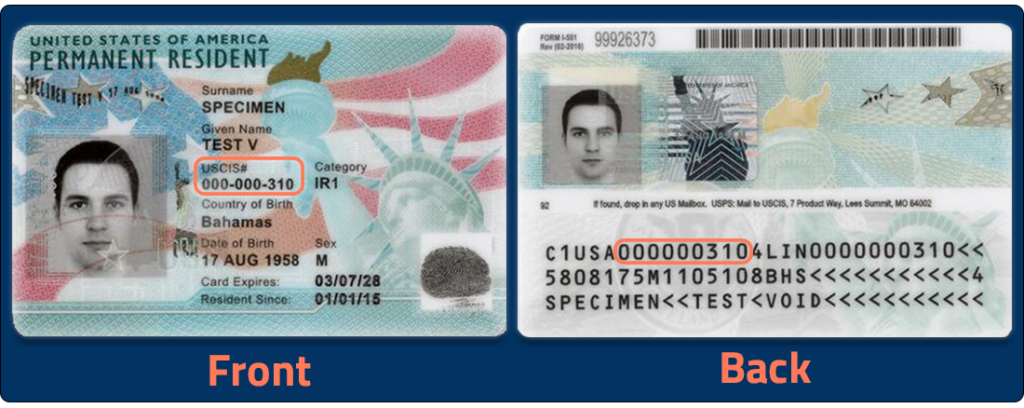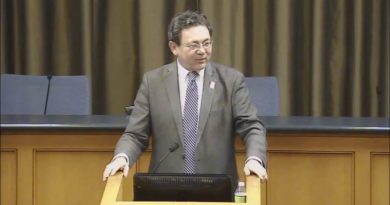Biden Administration to Apply Immigration Law (Kind of)
ABC News recently announced that the Biden administration would “begin conducting asylum interviews at the border”. If that sounds familiar, it’s because the outlet is describing “expedited removal”, a key border-control tool Congress gave the executive branch 26 years ago and which the Biden administration has largely ignored. Unfortunately, even watered-down border enforcement is now breaking news.
Expedited Removal and Credible Fear. “Expedited removal” is a process that Congress created in the Illegal Immigration Reform and Immigrant Responsibility Act of 1996 (IIRIRA), to address weaknesses in border enforcement and asylum processing.
As the House Judiciary Committee explained in its committee report for what would become IIRIRA (then known as the “Immigration in the National Interest Act”):
Existing procedures to deny entry to and to remove illegal aliens from the United States are cumbersome and duplicative. Removal of aliens who enter the United States illegally, even those who are ordered deported after a full due process hearing, is an all-too-rare event. The asylum system has been abused by those who seek to use it as a means of “backdoor” immigration.
The more things change . . .
IIRIRA replaced a very convoluted and much litigated calculus for assessing the rights of aliens who had entered illegally known as the “entry doctrine” — as well as what were known as “deportation” and “exclusion” proceedings — with the current concepts of “removal” and “removal proceedings”.
Most pertinently, Congress provided that the then-Immigration and Naturalization Service (INS) — the old unified agency with jurisdiction over immigration enforcement and adjudications — could process aliens without proper entry documents (including illegal entrants) via new “expedited removal” provisions in section 235(b)(1) of the INA. Expedited removal allowed INS to remove those aliens without giving them the opportunity to appear before an immigration judge (IJ).
Congress did not bar those aliens from seeking asylum, however. Rather, it added an exception to expedited removal called “credible fear”, by which asylum officers (AOs) could screen potential asylum claims by aliens subject to expedited removal.
Briefly, when an alien subject to expedited removal asserts an intention to apply for asylum or a fear of persecution upon return, the alien is to be referred to an AO, who interviews the alien to assess whether there’s “a significant possibility, taking into account the credibility of the statements made by the alien in support of the alien’s claim and such other facts as are known to the officer, that the alien could establish eligibility for asylum”.
If the AO issues a “positive credible fear determination” (as they did 81 percent of the time between FY 2008 and the fourth quarter of FY 2019), the alien is usually placed into removal proceedings to apply for asylum.
If the AO makes a “negative credible fear determination”, the alien can request review of that decision by an IJ. In 2 percent of all expedited removal cases involving aliens who claimed credible fear in that FY 2008-FY 2019 timeframe, IJs reversed negative AO determinations and found credible fear.
The biggest weakness in this system is that “credible fear” is a screening standard, and therefore the likelihood that an illegal entrant with no asylum claim will receive a positive credible fear determination from either an AO or an IJ is high — as noted, 83 percent of aliens subject to expedited removal between FY 2008 and Q4 FY 2019 passed that bar.
At the end of the day, however, just 14 percent of the border migrants who claimed credible fear were granted asylum, while nearly twice as many (27 percent) of the aliens who claimed credible fear were ordered removed in absentia when they failed to show up in immigration court.
Not that the Biden administration didn’t find a way to make the problem worse.
In May, the Biden administration amended the credible fear regulations to enable AOs to adjudicate border migrants’ asylum claims, too — not just credible fear. In an 83-page comment, the Center listed everything wrong about the plan (including that it deprived the American people a representative in the process and was highly likely to result in erroneous grants), but Biden pushed ahead anyway.
Through the end of January, 973 claims were referred to AOs for such “Asylum Merits Interviews” (AMIs), and as we had warned, the AO grant rate (33.5 percent) was more than double the IJ grant rate (13.8 percent in the first quarter of FY 2023) for asylum claims that had originated from a credible-fear claim by a border migrant.
Biden’s Use of Expedited Removal. Again, Congress in IIRIRA created expedited removal to make it easier for the then-INS and its successor agency in border enforcement, CBP, to remove aliens entering illegally, in order to prevent border migrants from abusing the asylum system and using it as a means of “backdoor” immigration.
Even though the Southwest border has been overrun with a surge of illegal migrants ever since Joe Biden took office, however, use of expedited removal has been the exception, not the norm, over the past two-plus years.
For example, of the nearly 563,000 illegal migrants apprehended by Border Patrol at the Southwest border who weren’t expelled under Title 42 in FY 2023, fewer than 52,000 — just over 9 percent — were subject to expedited removal.
Why? Because it’s a whole lot easier and quicker for Border Patrol agents to release illegal migrants than it is to process them for expedited removal.
Of course, as Judge T. Kent Wetherell II held in his recent opinion in Florida v. U.S., it’s not legal for Biden’s DHS to simply release those aliens, and it encourages even more aliens to cross the border illegally, but the Biden administration has shown little interest in either the strictures of the INA or border security.
What the Biden administration has been interested in up to this point is ensuring that every foreign national who can make it to this country — legally or otherwise — has the opportunity to apply for asylum, regardless of whether they have valid claims and despite the effects it has on the immigration court backlog.
The Administration’s Reverse. Even though most Americans have little idea just how dreadful border security at the Southwest border has become, the president’s immigration policies are deeply unpopular with the American people.
In a recent Economist/YouGov poll of 1,500 U.S. citizens, 55 percent of respondents disapproved of Biden’s handling of immigration (39 percent “strongly”), compared to just 35 percent who approved (an anemic 11 percent strongly so).
That’s likely why, as ABC News reported, the president’s DHS is dusting off the expedited removal playbook. That process has become so underused of late, however, that here is how the outlet describes the new Biden plan:
Starting with a small number of migrants, asylum officers will begin holding what are known as “credible fear” screening interviews with those at U.S. Customs and Border Protection facilities. … The interviews are among the first steps required to make an asylum claim.
As if expedited removal was a proposal dreamed up in the West Wing last week, not a process that has been law since the Clinton administration.
That said, the administration is putting its own spin on this two-decades-plus old process. According to ABC News:
The asylum interviews will move forward as the Department of Homeland Security works to expand access to legal resources for migrants in border facilities.
…
“DHS will work with legal service providers to provide access to legal services for individuals who receive credible fear interviews in CBP custody,” a DHS spokesperson said in a statement.
Note that the expedited removal statute provides that an alien who is scheduled for an AO credible fear interview “may consult with a person or persons of the alien’s choosing prior to the interview or any review thereof, according to regulations prescribed by the Attorney General”, but at no point does it require the government to make “legal resources” available to those aliens.
In fact, the regulation implementing that provision allows the alien to consult with a representative in advance, and to have that representative present at the interview (and to make a statement at the end), but it also makes clear: “Such consultation shall be at no expense to the Government and shall not unreasonably delay the process.” (Emphasis added.)
Despite that, ABC News reports that “A Biden administration official stressed that border station interviews will only increase as migrants get more connected with legal service providers.”
I’m a lawyer and interested in justice and due process (and the continued employment of lawyers), but slow-walking the reimplementation of expedited removal until DHS “works to expand access to legal resources for migrants in border facilities” violates the regulation and makes no sense.
Illegal migrants pay the smugglers who bring them to the United States for a reason, and are perfectly able in almost every case to explain that reason to the AO in the credible fear interview without consulting counsel. Simply put, migrants fear persecution on account of race, religion, nationality, membership in a particular social group, or political opinion, or they don’t.
The good news is Biden’s DHS has rediscovered expedited removal, the tool Congress gave it to secure the border. The bad news is that the department is making that process as “cumbersome” as the very flawed scheme it replaced in 1996. If aliens can pay smugglers thousands of dollars to bring them here, they can pay lawyers to be ready to represent them when they arrive, without forcing taxpayers to wait and foot the bill.






